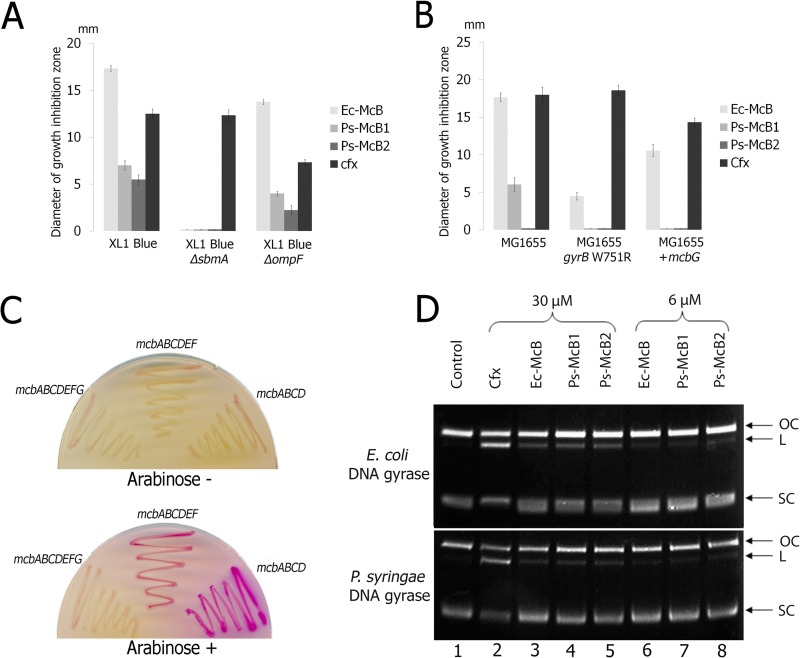Fig 3.
In vivo and in vitro activity of Ps-McB. (A) Two-microliter drops of solutions containing 50 μM Ec-McB, Ps-McB1, or Ps-McB2 or 20 μM ciprofloxacin (cfx) were deposited onto lawns of wild-type E. coli XL1-Blue cells or isogenic mutants lacking sbmA or ompF. After overnight growth at room temperature, diameters (in mm) of growth inhibition zones were determined. Mean values and standard deviations obtained from three independent experiments are shown. (B) Experiment performed as described for panel A, using wild-type E. coli MG1655 or MG1655 carrying a W751R substitution in gyrB (which makes cells partially resistant to Ec-McB) or carrying a plasmid expressing E. coli mcbG. (C) E. coli CSH50 tester cells containing an sfiA::lacZ fusion were transformed with plasmids co-overexpressing the indicated sets of mcb genes and plated onto MacConkey agar plates in the absence (top) or the presence (bottom) of the inducer. The results of overnight growth at 30°C are shown. (D) Plasmid pUC19 was incubated with E. coli or P. syringae gyrase in the absence or in the presence of the indicated inhibitors present at a concentration of 6 μM (lanes 6 to 8) or 30 μM (lanes 2 to 5). The reaction products were resolved by agarose gel electrophoresis and revealed by ethidium bromide staining. “OC” stands for the relaxed circular form, “L” stands for linearized plasmid, and “SC” stands for supercoiled plasmid.

